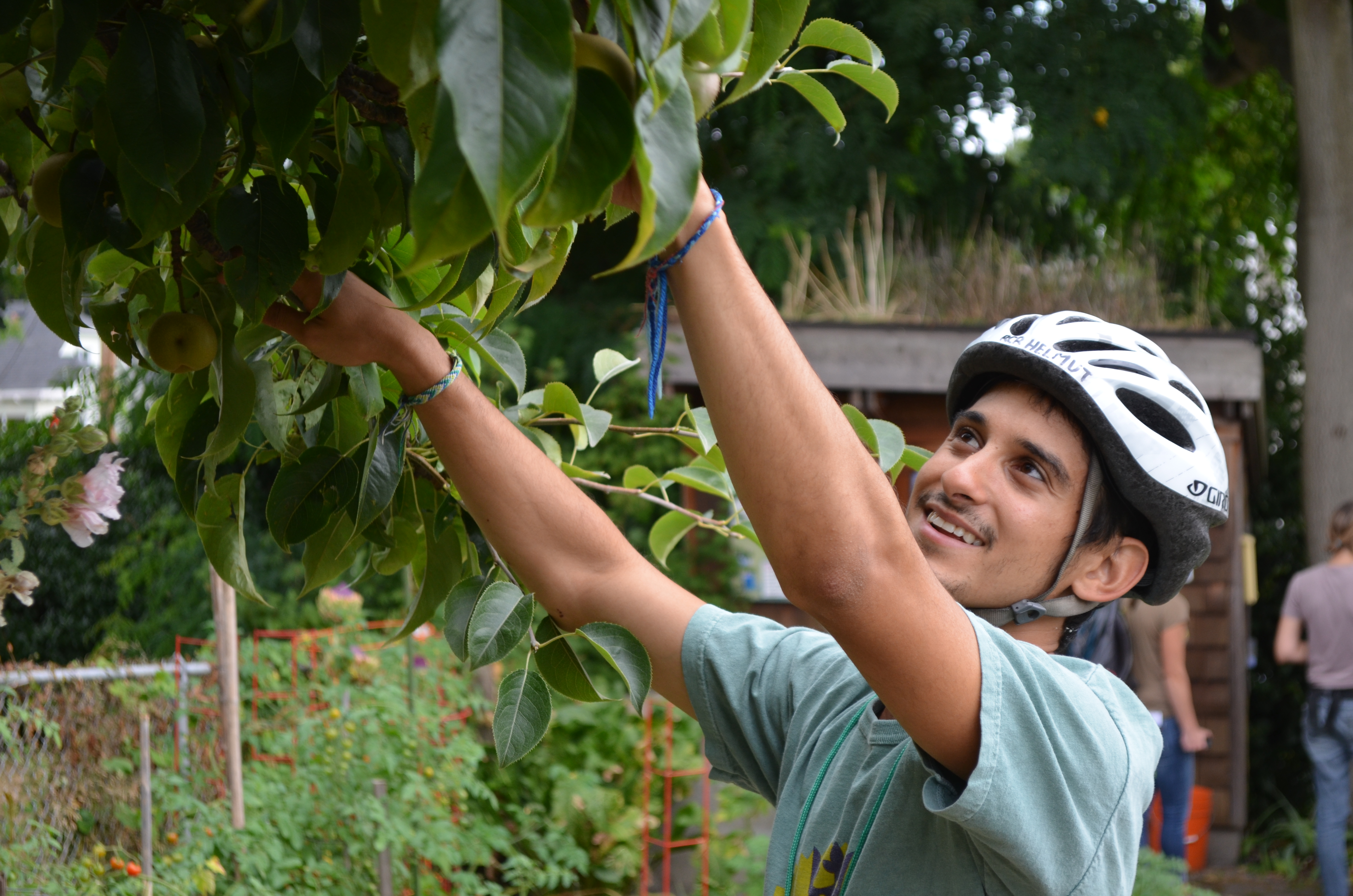Introduction

This past extended weekend, I attended the American Community Garden Association’s annual conference. I had heard about it from their Web site and an email subscription I received. It was an enriching experience to be at an urban gardening conference in a city that aspires to rival Vancouver and become the greenest city in the world by 2020; a city known for its p-patch community gardening programs and its wide array of recycling and composting bins at every corner.
After starting the Hope Gardens Project my freshman year, I wanted to finish my senior year as strongly as possible and effectively transfer the mission of the organization to the next generation of Tulane students. I wanted to attend this conference to acquire all the skills and advice I needed to in order to see it through. I hope to build my career around urban sustainability, and this was a nice portal into that lifestyle. It got me thinking about how to involve all relevant stakeholders in a city-wide project.
Summary of the Conference

The conference was different than I had initially expected. Most there were professionals. A very few were students. At first, I was disappointed, but then I realized I had the opportunity to socialize with those who have years of experience. They provided me with a generous amount of tips and encouragement to continue my work in the realm of environmental sustainability. I also learned a lot about a program in the University of Minnesota that Hope Gardens Project could benefit from modeling off of, and acquired the contact information to ensure an accessible resource.
The conference was divided into large lectures, panels, and smaller workshops. A sample of the different sessions I attended include: composting and corporations: a city-wide approach; enhancing gardens with art installations; using Geographic Information Systems to locate garden space; integrating traditional medicine and herbs to the urban landscape; and FEEST (a program that brings students to together to the dining table to learn about community and food). The opening lecture reinforced my belief that food is medicine and integral to our very foundation as a society.

I spent most of Saturday on a bike tour visiting various urban sustainability sites sprawled along the city. I visited rooftop gardens connected to some of Seattle’s hottest restaurants. I observed several neat techniques they employed including planting in kiddie pools to effectively retain moisture (covered in black trash bags so the heat won’t fracture the plastic) and drip irrigation systems connected to the building’s pipe systems. I also visited all the local government sponsored gardens, known as the p-patches, and learned that residents signed up to a 2-year wait-list to acquire a plot in these diversely-designed gardens. We also visited many of the neighborhood’s rain gardens, a cheap method to divert the mixing of sewage and rain water while simultaneously beautifying the city. It’s safe to say New Orleans is in desperate need of most of those especially in residential spaces.
The last presentation I attended was one of the more interesting ones. The presenters included the vice-president of the Mariners baseball stadium and the Director of Communications from Cedar Grove Composting, one of the country’s largest industrial composting companies. The Mariners representative boasted about the stadium’s very impressive path to sustainability. Both presenters echoed the idea that their approach to composting and waste reduction stemmed from a business angle, not an environmental one. It’s practical, as they saved a lot of money by diverting waste or 125,000 dollars a year to be more specific. These practical benefits were coupled with environmental ones as organic materials in anaerobic conditions do not break down, and if stuck in landfill, just release methane.
Main Learning and Critical Thinking from Conference

One of the most important messages conveyed in the conference is the urgency of breaking down barriers that we have set up as artificial dichotomies for looking at the issue of food in our current system. This includes breaking barrier between rural and urban communities and making explicit to the general public the connection between the two. We need to work together to ensure that our food supply is both high-quality and sustainable. I also learned that there is so much left to do in the realm of urban farming and urban sustainability. New Orleans has a long way to go before it matches Seattle, and Seattle has a long way to go before it matches its own ideals. I was reassured that I should remain actively involved a changemaker in this movement because as one keynote speaker noted
Thanks for an incredible opportunity CELT,
Ophir
